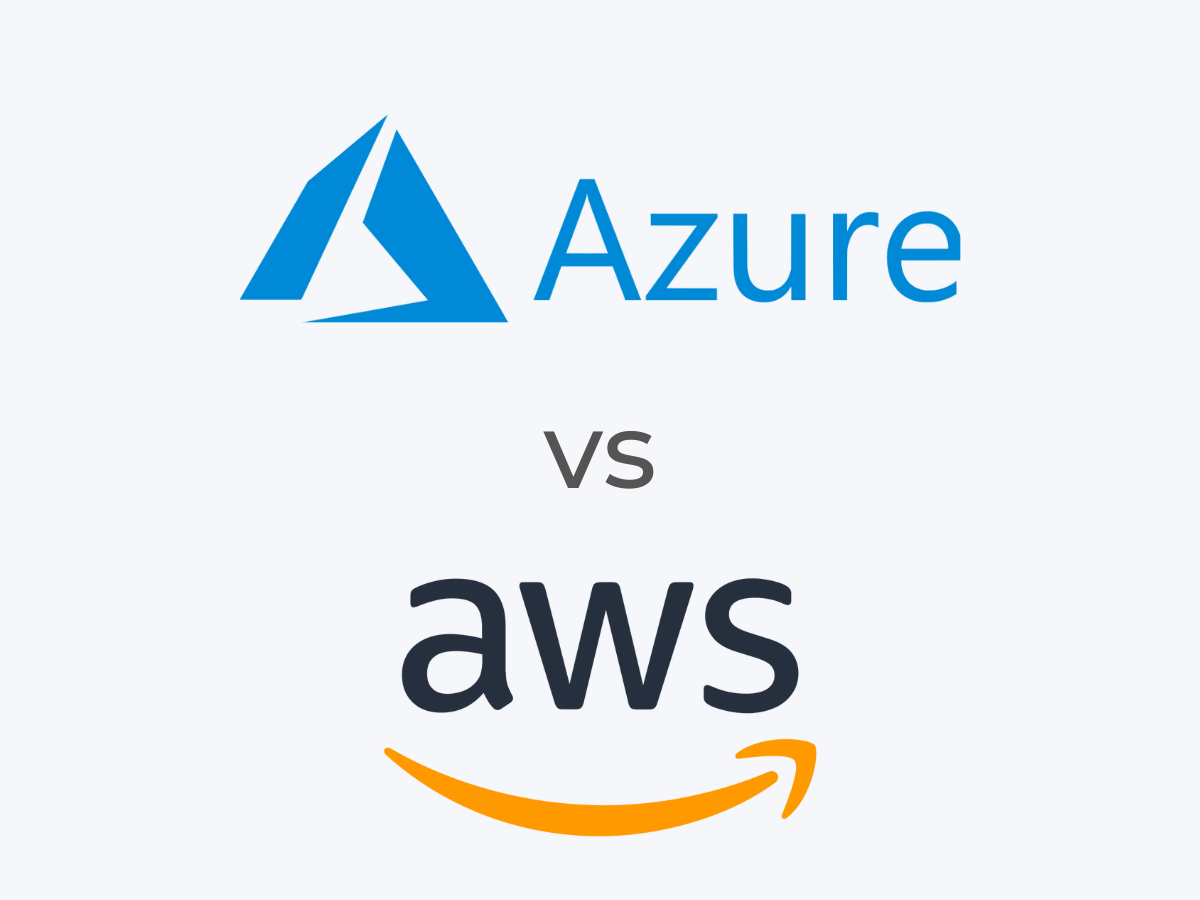Many modern industries require industrial IoT (IIoT) solutions for better productivity. IIoT helps enterprises address critical business and manufacturing concerns like real-time analytics, sensor integration, optimum asset usage and supply chain visibility.
Microsoft Azure and AWS are two leading IIoT service providers. Both offer IIoT platforms — Microsoft Azure IoT and AWS IIoT — that help businesses collect, store and analyze IoT data for industrial, consumer and commercial purposes.
The Azure IoT platform enables enterprises to develop, deploy, scale and manage IoT solutions compatible with industrial devices and infrastructures through their OPC Unified Architecture standards. The AWS IIoT platform offers enterprises a range of IIoT services for manufacturing, and it spans about 12 major IIoT offerings.
Microsoft Azure IoT vs AWS IIoT: Comparison table
| Feature | Microsoft Azure IoT | AWS IIoT | Google Cloud (sponsored) |
|---|---|---|---|
| IoT analytics | Yes | Yes | Yes |
| Digital twins | Yes | Yes | Yes |
| Database for IoT workloads | Cosmos DB (SQL database) | DynamoDB (NoSQL) | Cloud SQL |
| AI integration | Yes | Yes | Yes |
| IIoT service lines | Narrow offering | Broader offering | Partner-led solutions |
| Edge computing | Azure IoT Edge | AWS Greengrass | Cloud to Edge |
| For more information | Visit Azure IoT | Visit AWS IIoT | Visit Google Cloud |
AWS and Azure pricing
AWS and Azure offer similar pricing, with both platforms offering free plans for new users under certain services; however, there are notable variations.
AWS IIoT pricing
AWS IoT solutions are billed separately based on the IoT service you choose and the amount of usage. For instance, if you’re on IoT Greengrass, you pay only for what you consume (the starting price is $0.16 per month for 1 to 10,000 devices); however, IoT Core users are charged separately for messaging, connectivity, device metadata storage, device state storage and rules engine usage.
The starting price for IoT Greengrass customers is $0.16 per month for 1 to 10,000 devices. It’s important to note that while AWS’s IoT pricing model offers flexibility, it can also lead to unexpected costs if there is a spike in usage.
For more details on AWS pricing, reach out to AWS for a quote or use the pricing calculator.
Azure IoT pricing
Azure offers different pricing for each of its IIoT services. Pricing mostly comes in a basic tier for small-scale projects and standard tiers for larger deployments. The Azure IoT offerings include:
- IoT Hub: Starts at $10 for 400,000 messages/day per IoT Hub unit.
- Azure Digital Twins: $1 per million messages.
- Azure IoT Central: Starts at $0.08 per device per month.
- Azure Stream Analytics: Starts at $0.406 per streaming mode.
- Azure Sphere: Starts at less than $8.95.
- Azure IoT Edge: Free and open source for IoT Edge runtime and $1 for IoT Edge Modules.
While Azure’s IoT tiered-pricing model provides predictability, it may not offer the same flexibility as AWS for businesses with fluctuating usage.
Feature comparison: Microsoft Azure IoT vs AWS IIoT
IIoT analytics
Data analytics is a critical part of IIoT, as there is a huge volume of data to analyze. Although both services can make a case for data analytics offerings, AWS takes things a bit further with its fully managed IIoT analytics.
With AWS IIoT analytics, you can quickly gather data and start performing analytics. It’s fully integrated with AWS IoT Core and accepts data from any source, including Amazon Kinesis, Amazon S3 or third-party tools, using a BatchPutMessage API.
Azure’s Stream Analytics (Figure A) offers data analytics with SQL syntax, which is extensible with JavaScript and C# codes. This feature makes it easier to run complex analytics without learning to provision virtual machines or new processing frameworks.
Figure A
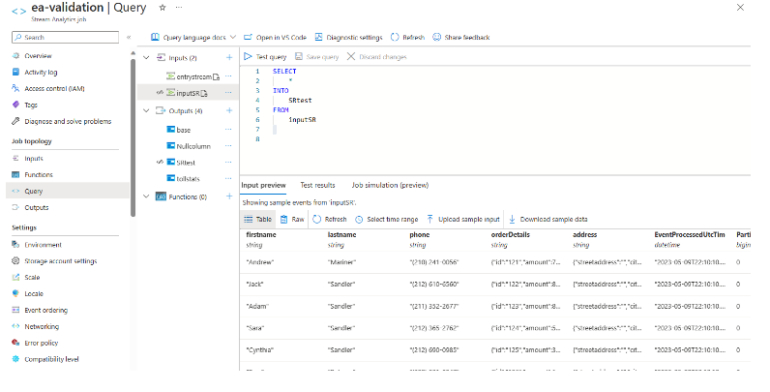
Development and integration
Azure and AWS IIoT platforms are loaded with tools enabling enterprises to develop, monitor, configure and deploy their IoT solutions. However, AWS SDKs (Figure B) are broader and cover more applications and IoT devices. AWS SDKs are crucial for organizations that run a dedicated development team structure as it accelerates IoT development and integration.
Figure B
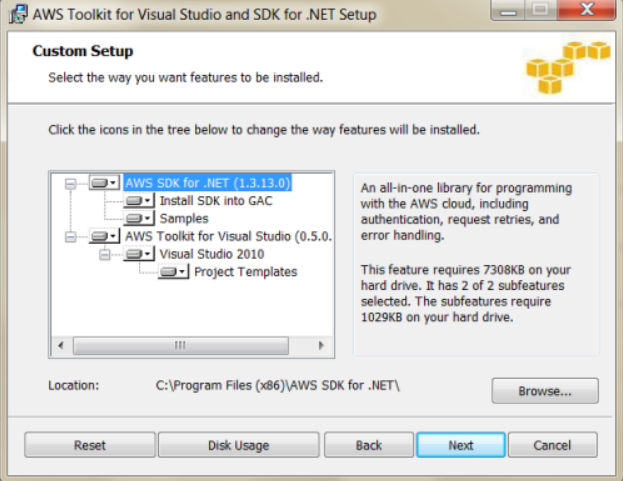
In addition, Azure offers much in terms of IoT development and integration but lacks the broadness that AWS offers in this category.
Edge capabilities
Both AWS and Azure offer IIoT services with edge capabilities, but who offers more flexibility? AWS offers FreeRTOS, Greengrass (Figure C) and IoT ExpressLink to help enterprises build and manage edge devices. These edge features offer a broader infrastructure for edge computing capabilities across use cases.
Although Azure IoT edge consists of free edge runtime, certified IoT edge hardware, cloud interface and edge modules, it still lacks the flexibility of AWS.
Figure C
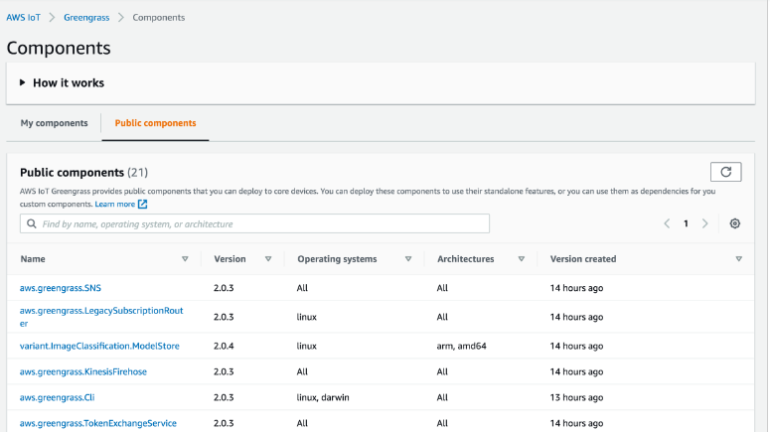
Security provisions
Security is a critical component of any IIoT service provider; both AWS and Azure offer secure and reliable IoT services. In addition, their IIoT security services offer risk-free exchange processes, two-way authentications, and TLS connections and encryption.
Azure relies on Azure Sphere (Figure D), Azure Defender and the OPC Vault microservice within its Azure IoT core to secure and maintain industrial assets. The IIoT security architecture in AWS is offered through authorization, authentication, identity and access management, and data protection.
Figure D
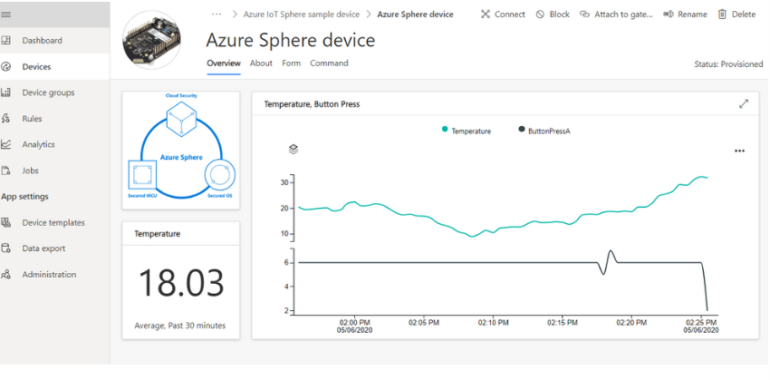
Digital twin
AWS IoT Digital Twin called TwinMaker provides a platform for creating digital representations of physical systems. Twin models can span the object’s lifecycle, using real-time data from sensors to simulate behavior and monitor operations. With TwinMaker, developers can create digital twins of real-world systems such as factories, buildings and industrial equipment. The platform emphasizes human-centric experiences, offering immersive 3D views and addressing data silos.
Azure Digital Twins is a PaaS offering that enables the creation of twin graphs (Figure E) based on digital models of entire environments; these environments can represent buildings, factories, energy networks and more. Azure Digital Twins models are structured using the Digital Twins Definition Language and allow solution builders to create Custom twin models of their choice. It also offers real-time insights, 3D visualizations and historized environment data integration.
Figure E
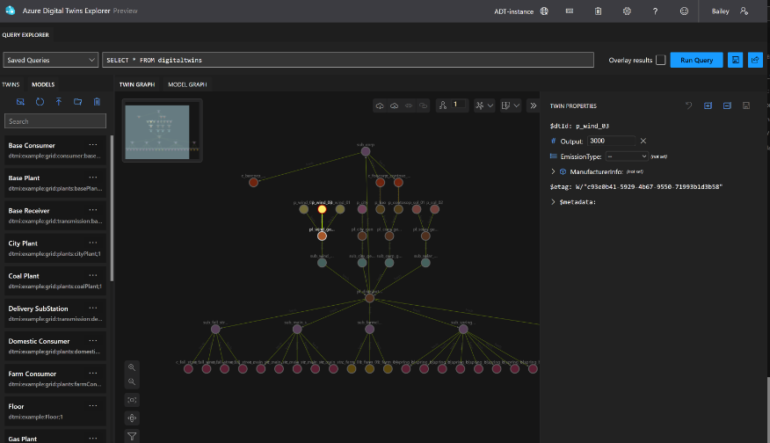
Database for IoT workloads
Amazon’s IoT uses DynamoDB, a NoSQL database service for workloads of all sizes. NoSQL simplifies the storage and querying of JSON data at scale, enabling faster IoT solutions development. With its scalability, DynamoDB offers a reliable foundation for managing IoT-related data, ensuring efficient data storage and retrieval operations without compromising on speed or reliability. Users can also leverage DynamoDB’s integration with AWS IoT Core to streamline data ingestion processes.
Azure IoT runs on Cosmos DB, a multi-model database designed for ingesting vast amounts of device telemetry data at scale. Cosmos DB, while being more technical compared to AWS’s DynamoDB, supports various features such as Azure Databricks, Azure SQL Database, Azure Synapse Analytics and Cosmos DB Explorer (Figure F), providing a comprehensive framework for real-time data processing, storage and analytics.
While Amazon DynamoDB and Azure Cosmos DB offer similar capabilities for IoT workloads, the key difference is that Cosmos DB allows for SQL-like queries and is designed as a drop-in replacement for traditional relational databases, while DynamoDB is tailored for NoSQL-like queries.
Figure F
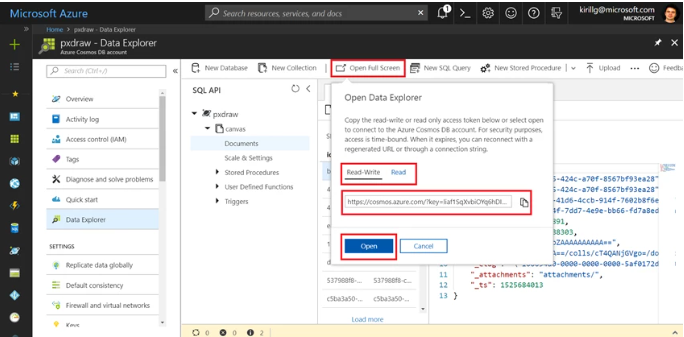
AWS IIoT pros and cons
AWS IIoT pros
- AWS IoT services are flexible and usage-based.
- The AWS IoT platform has about 15 major IIoT services.
- Businesses can create IoT solutions with artificial intelligence and machine learning integration.
- Feature documentation is more straightforward than Azure.
AWS IIoT cons
- Limited integration with non-AWS IoT tools.
- AWS’s pricing model can lead to unexpected costs.
Azure IoT pros and cons
Azure IoT pros
- Supports modern industrial devices and infrastructures.
- Broader IIoT asset data analytics compared to AWS.
- Offers an easy path to integration with other Azure services.
- Businesses can determine costs easily.
- Offers free 8,000 messages/day under its standard tier.
Azure IoT cons
- Documentation is more complex compared to AWS.
- It’s more expensive than its competitors.
Should your organization use Microsoft Azure IoT or AWS IIoT?
Microsoft Azure and AWS are great IIoT solution providers with impressive offerings in the IIoT market.
If you are looking for an IIoT solution that is sophisticated and comprehensive but still fits any project size, AWS platform for IIoT will be a better fit. If you are inclined to go for a more user-friendly solution for your team, then you should consider Microsoft Azure.
You may also consider pricing before deciding which tool is best for you.
Methodology
To compile this review of AWS vs Azure for industrial IoT solutions, we focused on key features that IIoT platforms should offer. Information for this review was based on a variety of sources, including each vendor’s website, video demonstrations and user feedback from third-party review platforms like Gartner.
